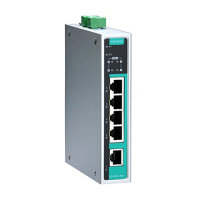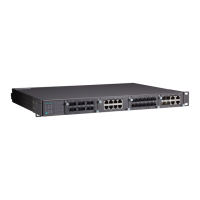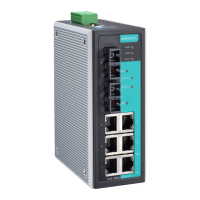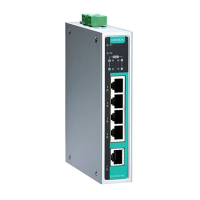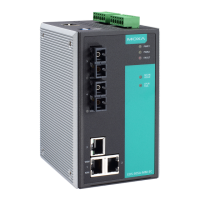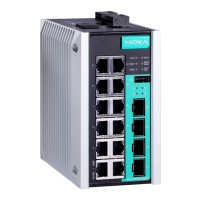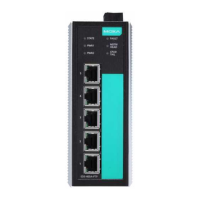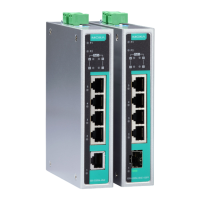TN-5516/5518 User’s Manual Featured Functions
3-51
Advantages of DiffServ over IEEE 802.1D are:
y Configure how you want your switch to treat selected applications and types of traffic by
assigning various grades of network service to them.
y No extra tags are required in the packet.
y DSCP uses the IP header of a packet and therefore priority is preserved across the Internet.
y DSCP is backward compatible with IPV4 TOS, which allows operation with existing devices
that use a layer 3 TOS enabled prioritization scheme.
Traffic Prioritization
The TN-5500 classifies traffic based on layer 2 of the OSI 7 layer model, and the switch prioritizes
received traffic according to the priority information defined in the received packet. Incoming
traffic is classified based upon the IEEE 802.1D frame and is assigned to the appropriate priority
queue based on the IEEE 802.1p service level value defined in that packet. Service level markings
(values) are defined in the IEEE 802.1Q 4-byte tag, and consequently traffic will only contain
802.1p priority markings if the network is configured with VLANs and VLAN tagging. The traffic
flow through the switch is as follows:
y A packet received by the TN-5500 may or may not have an 802.1p tag associated with it. If it
does not, then it is given a default 802.1p tag (which is usually 0). Alternatively, the packet
may be marked with a new 802.1p value, which will result in all knowledge of the old 802.1p
tag being lost.
y Because the 802.1p priority levels are fixed to the traffic queues, the packet will be placed in
the appropriate priority queue, ready for transmission through the appropriate egress port.
When the packet reaches the head of its queue and is about to be transmitted, the device
determines whether or not the egress port is tagged for that VLAN. If it is, then the new
802.1p tag is used in the extended 802.1D header.
The TN-5500 will check a packet received at the ingress port for IEEE 802.1D traffic
classification, and then prioritize it based upon the IEEE 802.1p value (service levels) in that tag.
It is this 802.1p value that determines which traffic queue the packet is mapped to.
Traffic Queues
The TN-5500 hardware has multiple traffic queues that allow packet prioritization to occur. Higher
priority traffic can pass through the TN-5500 without being delayed by lower priority traffic. As
each packet arrives in the TN-5500, it passes through any ingress processing (which includes
classification, marking/re-marking), and is then sorted into the appropriate queue. The switch then
forwards packets from each queue.
The TN-5500 supports two different queuing mechanisms:
y Weight Fair: This method services all the traffic queues, giving priority to the higher priority
queues. Under most circumstances, this method gives high priority precedence over
low-priority, but in the event that high-priority traffic except the link capacity, lower priority
traffic is not blocked.
y Strict: This method services high traffic queues first; low priority queues are delayed until no
more high priority data needs to be sent. This method always gives precedence to high priority
over low-priority.

